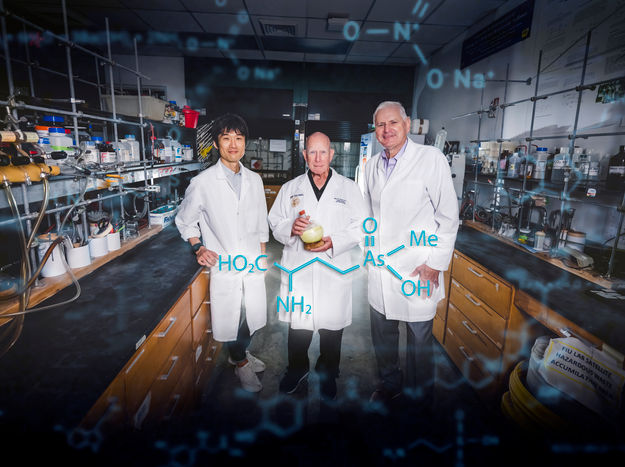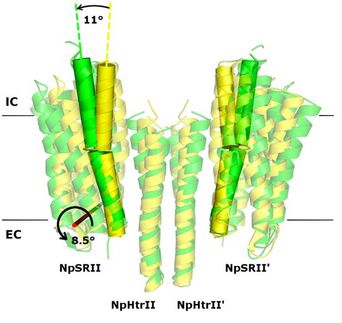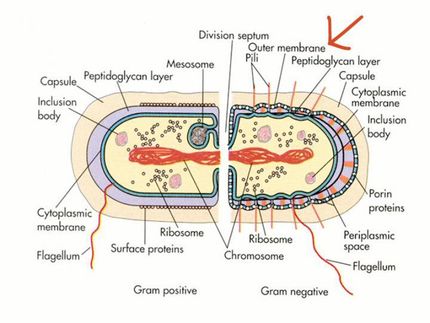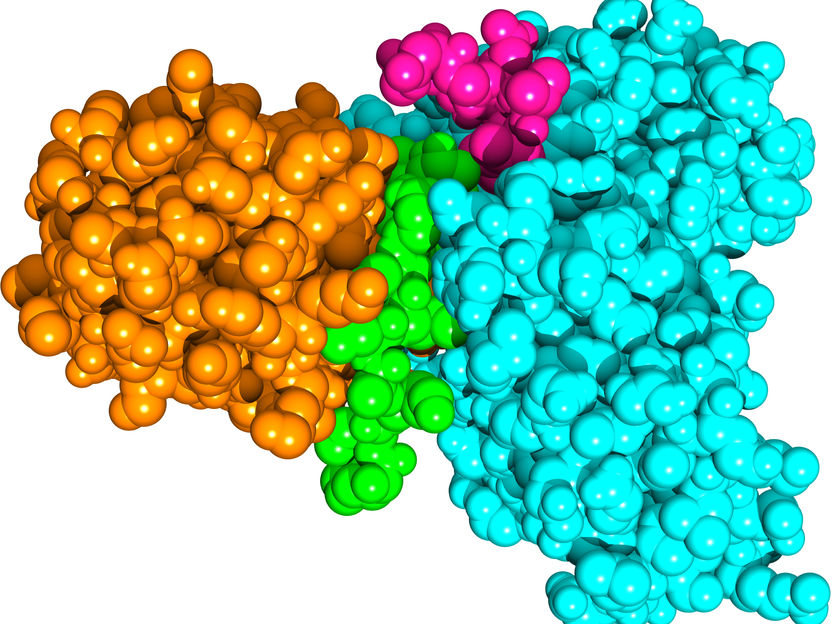Researchers patent synthetic antibiotic
Second patent awarded to Florida International University for developing new arsenic-based antibiotics
Florida International University researchers have moved a step closer to producing synthetic arsenic-based drugs in their quest to solve an urgent worldwide health problem ―the growing number of infections that have become antibiotic-resistant.

Masafumi Yoshinaga, Ph.D., Barry P. Rosen, Ph.D., Stanislaw Wnuk, Ph.D., and the chemical formula for arsinothricin.
Florida International University
The team from the FIU Herbert Wertheim College of Medicine (HWCOM) and the FIU College of Arts, Sciences and Education (CASE) has been awarded a U.S. patent for devising methods for chemically synthesizing arsinothricin (AST), a new arsenic-based antibiotic. College of Medicine researchers previously discovered AST as part of an international team that included the Institute for Agro-Environmental Sciences, NARO, in Japan.
Some 2.8 million people in the United States are infected with drug-resistant bacteria every year, and 35,000 die as a result, according to the Centers for Disease Control & Prevention. Among the infections becoming more resistant to current antibiotics are pneumonia, tuberculosis, methicillin-resistant Staphylococcus aureus (MRSA), and E. coli. AST is a broad-spectrum antibiotic, produced in small amounts by soil bacteria, that is effective against these pathogens and is not toxic to human cells in tissue culture.
“The ability to chemically synthesize AST is significant because it allows us to produce large quantities of the drug,” said Barry Rosen, Distinguished University Professor in Cellular Biology & Pharmacology at the College of Medicine. The latest patent was awarded to Rosen, fellow HWCOM researcher Masafumi Yoshinaga, and the team of Stanislaw Wnuk, Md Abu Hasan Howlader, and Sk Md Sazzad Hossain Suzol from the CASE Department of Chemistry and Biochemistry.
“It has been quite challenging to develop a technique to synthesize AST,” Wnuk said. “It involves very sophisticated methods to be able to purify and use AST.” The group’s findings, “Chemical Synthesis of the Organoarsenical Antibiotic Arsinothricin,” were published in the Royal Society of Chemistry journal RSC Advances.
Yoshinaga, who has run multiple experimental variations in the lab to develop the synthesis strategy, said that in addition to creating a compound that lends itself to mass production, there is another benefit. “The resulting compound also allows for modifications which could lead to additional new drugs.”
While the group’s research has progressed steadily, they acknowledged that the typical path from start-up to manufacturing a new drug can take 10 years or more. They hope to gain the interest of angel investors and pharmaceutical companies that see the potential in their work.
“It’s very exciting, and from a public health standpoint, the work is extremely important,” Rosen said. “We see this as the first member of a family of arsenic-based drugs. Pharmaceutical companies have facilities to mass produce medications, something universities don’t have.”
As a successful contributor to FIU’s ranking among the top U.S. public universities in the number of U.S. utility patents granted, the team said the support of the Office of Technology Management and Commercialization has been essential to their work, as has the cross-college collaboration.
“We are seeing what can be accomplished when we work in collaboration,” Rosen said. “I believe we will be seeing far more of these cooperative efforts.”
























































